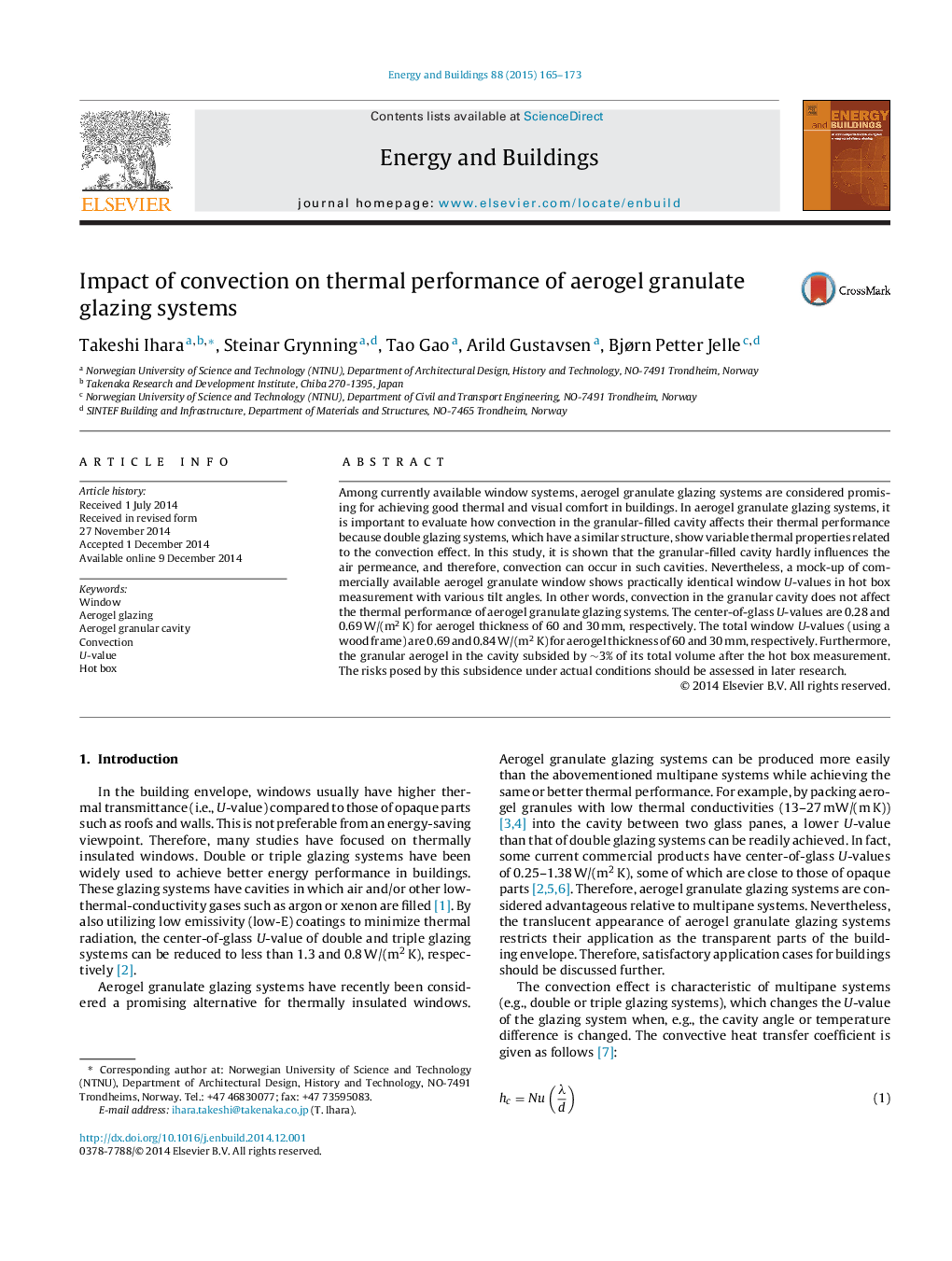| Article ID | Journal | Published Year | Pages | File Type |
|---|---|---|---|---|
| 6732395 | Energy and Buildings | 2015 | 9 Pages |
Abstract
Among currently available window systems, aerogel granulate glazing systems are considered promising for achieving good thermal and visual comfort in buildings. In aerogel granulate glazing systems, it is important to evaluate how convection in the granular-filled cavity affects their thermal performance because double glazing systems, which have a similar structure, show variable thermal properties related to the convection effect. In this study, it is shown that the granular-filled cavity hardly influences the air permeance, and therefore, convection can occur in such cavities. Nevertheless, a mock-up of commercially available aerogel granulate window shows practically identical window U-values in hot box measurement with various tilt angles. In other words, convection in the granular cavity does not affect the thermal performance of aerogel granulate glazing systems. The center-of-glass U-values are 0.28 and 0.69Â W/(m2Â K) for aerogel thickness of 60 and 30Â mm, respectively. The total window U-values (using a wood frame) are 0.69 and 0.84Â W/(m2Â K) for aerogel thickness of 60 and 30Â mm, respectively. Furthermore, the granular aerogel in the cavity subsided by â¼3% of its total volume after the hot box measurement. The risks posed by this subsidence under actual conditions should be assessed in later research.
Keywords
Related Topics
Physical Sciences and Engineering
Energy
Renewable Energy, Sustainability and the Environment
Authors
Takeshi Ihara, Steinar Grynning, Tao Gao, Arild Gustavsen, Bjørn Petter Jelle,
